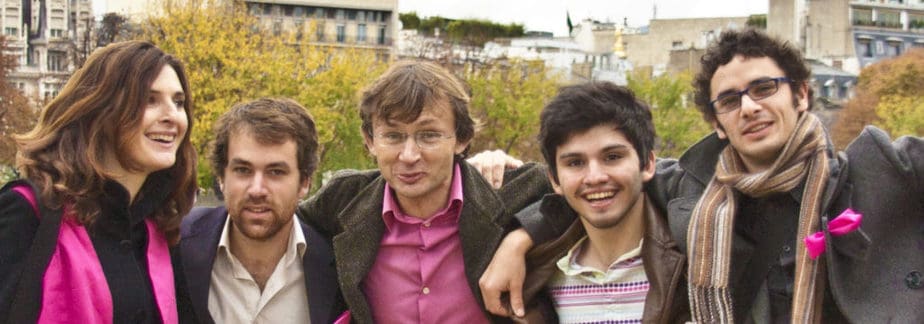
Numerous tourists view Amsterdam from canal boat tours (2015) Photo by Peter K Burian Wikimedia
Top 10 Remarquable Facts About Canals of Amsterdam
Amsterdam, the capital of the Netherlands, has more than 100 kilometers of canals. the three main canals are Herengracht, Prinsengracht, and Keizersgracht were dug in the 17th century during the Dutch Golden Age.
The canals are located in Amsterdam, North Holland, Netherland and they cover 198.2 ha. Much of the Amsterdam canal system is the successful outcome of city planning. The canals in Amsterdam are now used for tourism, recreation, houseboats, and a relatively small amount of private transport.
1. The Canals Were Mainly Build Between 1585 and 1665
Many Canals were built between 1585 to 1665. It became clear by end of the 16th century that Amsterdam’s order canals needed renovation and the city’s government did not hesitate and began working on them. The canals would eventually become the Grachtengordel (the Canal Belt). Over the next century, Amsterdam’s historic centre was dug out and reshaped to meet these demands, leading to its current, concentric layout.
2. The Canals Have Inspired Many Artists

Prinsengracht in Amsterdam Photo by Juke Schweizer Wikimedia
Many artists have been inspired by the canals for years. They have used the canals in their work and this becomes one of the remarkable facts about the canals. Amsterdam’s iconic Canals have appeared in many works of art over the years.
One of the artists who used Amsterdam’s iconic canals is Claude Monet, she painted a beautiful landscape featuring de Zuiderkerk and De Groenburgwal canals while visiting Amsterdam in the late 19th century. Albert Camus is also one of the many artists who used Canal’s work. He depicted the waterways in his prose in his menus Opus, The Fall, and compares Amsterdam’s concentric canal belt to the circles of hell.
3. Inside Amsterdam’s Canal Ring There are Over 1000 Monuments
The Canals are old and have stayed for many centuries, they are as well located in suitable areas thus enabling Amsterdam’s canals to contain a whole host of historical sites. There are currently at least over 1550 monuments inside their borders, including several extremely important landmarks and museums such as Westerkerk, Anne Frank Huis, and Museum van Loom not forgetting the hundreds of picturesque, 17th-century townhouses on their banks.
4. Amsterdam Canals Water is Clean

Amsterdam’s canal, the second half of 17th-century Photo by Jan Van Der Heyden Wikimedia
The water from the Amsterdam Canals was extremely dirty and people were getting sick from it. In the past, sewers of all canal houses and houseboats all ended up in the canal but are now connected to the sewer.
Nowadays, the water quality has improved and is better than ever before. The water quality is measured and monitored every single day. A lot of money has been invested and energy in improving the water quality.
These efforts have been of benefit and have helped the water quality to remain, however, it still occasionally happens that the sewage system can’t cope with the water after heavy rainfall and this causes the excess water from the sewer to run into the canals. When this rare happens various pumping stations are used which pump cleaner water from the surrounding lakes through the Amsterdam canals, this helps in maintaining clean water in the canals.
5. Ice Skate Lastly Happened in 2018
Ice Skating in the Netherlands is common and practiced daily. The Netherlands has a lot of water and this makes it possible to ice skate in many places, provided it’s freezing. When it has frozen hard enough for a long time it’s as well possible to ice skate on the Amsterdam canals.
Recently due to global warming, winter in Netherland has become less cold. Due to this, it is becoming less and less common for the possibility to ice skate on natural ice. In 2018 it remains remarkable since it is the most recent time that the Amsterdam canals could be ice skated.
6. The Canals are Filled with Fish Since the Improvement of Water Quality
In the past the water of Amsterdam canals was dirty and no animal could have survived in it. However, the water quality of canals has now improved and cleanliness is maintained every single day. This has led to an enormous increase in the number of pieces of fish in the waters.
Nevertheless, Amsterdam canals get supplies of water from the Amsterdam River, Ijsselmeer, and the North Sea Canal. North Sea Canal brings salt water to the city, this ensures that in certain parts of Ijsselmeer river there are both fresh and saltwater fish swimming around. This results in different types of fish ending up in the waters of Amsterdam.
Fish in Amsterdam are as well big (3.2ft.) due to the improved water quality preventing pollution of waters that may affect fish as well as the connection with major rivers. The most common fish are Perch, Zander, Pike, Eel, Carp, and Bream.
7. Enabled Amsterdam to be the Streetfishing Capital of the World
The Amsterdam canals are very suitable for fishing. Due to the good fish stock and water availability in the city. It is becoming increasingly popular to fish in Amsterdam, this is a result of water quality which has improved incredibly unlike past, with good fishing points, and many different fish species in the canals.
These facts have left remarks and the number of people fishing has increased rapidly in the canals and waters around them. Today the city even has its fishing club with over 10,000 members. There are many bridges over the canals that provide good hiding spots for the predatory fish in the canal making the centre of Amsterdam a good place to fish for predatory fish. This makes Amsterdam to be referred to street fishing capital of the world.
8. Historical Canals in Amsterdam are Part of UNESCO World Heritage
In 2010, the Amsterdam canals that formed the “Canal belt” joined the UNESCO World Heritage site. This is a well-deserved recognition of this part of the city’s contributions to global history that helped to put this cityscape of incredible waterways on the world map.
9. Monet Painted the South Church with the Groenburgwal Canal
During Monet’s visit to the Netherlands, she painted the South Church also known as Zuiderkerk. The South Church was the first church built in the city for Protestant Services in the year 1603 to 1611. Claude Monet painted the church 13 times and the caption stopped for us to admire the exact angle as Monet painted with the Groenburgwal canal directing up to it.
10. Canals Lost to Roads and Car Traffic
The space for cars and other land traffic was needed. During the 20th century, many canals were filled in to make streets and parking spaces. In 1955, a local police commissioner submitted a serious proposal to the City Council to solve all traffic problems by filling up all canals to make highways.
Planning a trip to Paris ? Get ready !
These are Amazon’s best-selling travel products that you may need for coming to Paris.
Bookstore
- The best travel book : Rick Steves – Paris 2023 – Learn more here
- Fodor’s Paris 2024 – Learn more here
Travel Gear
- Venture Pal Lightweight Backpack – Learn more here
- Samsonite Winfield 2 28″ Luggage – Learn more here
- Swig Savvy’s Stainless Steel Insulated Water Bottle – Learn more here
Check Amazon’s best-seller list for the most popular travel accessories. We sometimes read this list just to find out what new travel products people are buying.









